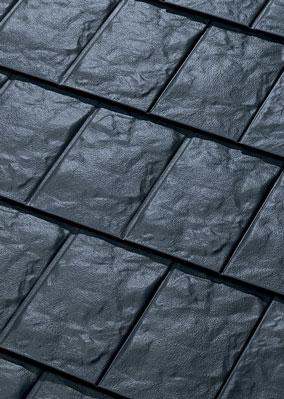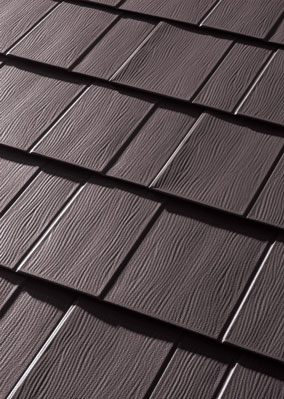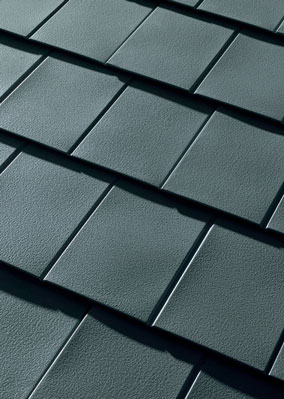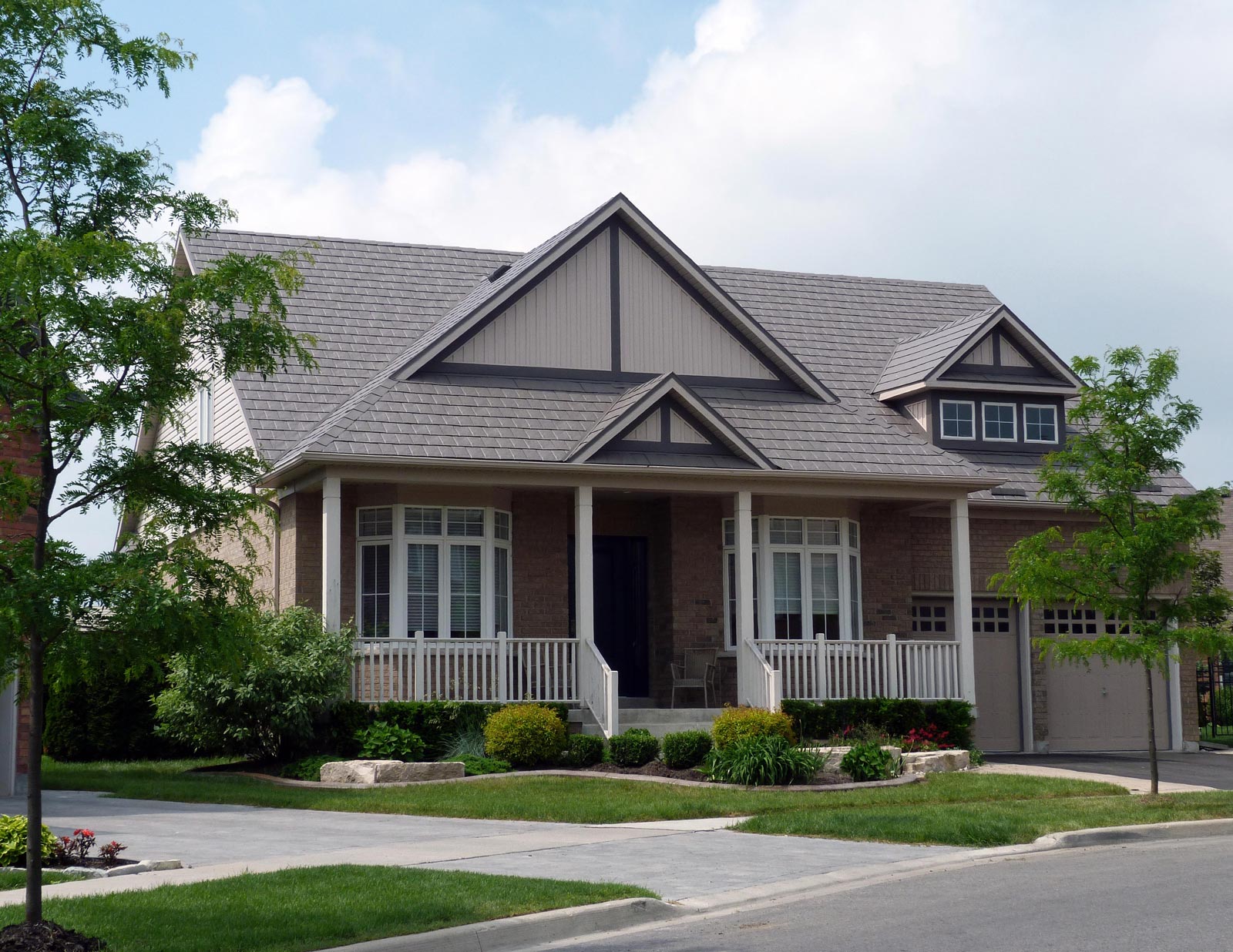Asphalt shingles may be the most popular roofing in the U.S. by volume, but metal roofing is gaining popularity for its durability, longevity and low-maintenance benefits. Still, many people are unfamiliar with the product and have misconceptions about this quality roofing option.
 MetalWorks® StoneCrest® Slate
MetalWorks® StoneCrest® Slate
Vermont Blue
 MetalWorks® AstonWood®
MetalWorks® AstonWood®
Timber Brown
 MetalWorks® StoneCrest® Tile
MetalWorks® StoneCrest® Tile
Quaker Green
Myth #1 – Metal Roofs Are Loud
One of the biggest misconceptions of metal roofs is that they are loud during a rainstorm and unbearable during severe weather, like repeatedly dropping an object on tin. In reality, residential metal roofs are fastened to the roof deck, not open rafters, and are able to be applied over multiple layers of old asphalt shingles so the sound insulation between the metal shingles and your ears could reduce the noise to potentially be less than more traditional forms of roofing.
Myth #2 – Metal Roofs Attract Lightning
The Metal Construction Association has released several technical bulletins outlining research that shows metal roofs are no more likely to be struck by lightning than other types of roofing. The factors that do affect lightning strikes include topography of the surrounding area, the height and size of the building and the frequency and severity of storms in the area.
"Research shows that the material used in roof construction does not influence the risk of a lightning strike," says Karl Hielscher, MCA’s executive director in a press release. "In fact, the presence of a metal roof really shouldn’t statistically increase or decrease the chances of a lightning strike. There are many other factors that influence the actual chance of a lightning strike."
Myth # 3 – Metal Roofs Are Ugly
Metal roofs have traditionally been associated with industrial buildings, or outbuildings like sheds and barns. But as metal roofing’s popularity has grown, so has the technology to make it an excellent choice for residential structures. Manufacturers have gone from standing seam metal roofs to creating metal shingles in a variety of colors that would make an attractive covering for any home. Some metal shingles are stamped and shaped to look like other types of roofing, like wood shake, stone slate and clay tile such as the MetalWorks steel shingle produced by major roofing manufacturer TAMKO Building Products.
Myth #4 – Metal Roofs Can’t Handle Hail
Metal roofs are actually some of the most resilient roofing options when it comes to hail. Many metal shingles are rated Class 4 for Impact Resistance by the UL testing group. The Metal Roofing Alliance (MRA) reported that studies conducted by the Insurance Institute for Business & Home Safety (IBHS) acknowledged that all roof types can sustain some cosmetic damage depending on hailstorm severity, but “metal roofing performed best and was much less likely to puncture as compared to asphalt, withstanding even golf ball-sized hail stones without compromising performance.”
And metal roofs stand up well to other types of extreme weather. Metal shingles are often rated to withstand winds of over 100 miles per hour, and are rated for fire resistance.
Myth #5 – Metal Roofs Aren’t Energy Efficient
Because metal in other uses is a good conductor of heat and cold, some homeowners are concerned a metal roof will cause their homes to be cooler during the winter and hotter during the summer. Besides the comfort factor, the increased utility costs associated with that possibility is a major driver of this concern. The reality is that, according to the MRA, metal roofing boasts some of the best energy efficiency among roofing options. State Farm Insurance Company reported metal roofs reflect solar radiant heat which can reduce cooling costs by 10 to 15 percent.
“Unlike asphalt shingles, the secret to metal roofing’s energy efficiency is its highly-reflective surface, regardless of color,” said Rick Taylor, a longtime roofing contractor who now works as TAMKO’s field sales training manager. “This means, in our case, all of the MetalWorks colors are ENERGY STAR-certified and are rated by the Cool Roof Rating Council – even the darkest color options.”
The Metal Roofing Alliance reports metal roofs also provide excellent insulation in the winter, and estimates choosing metal could save up to 40 percent in energy costs for a home during the year. And the Metal Construction Association said metal roofs are considered a product of choice for snowy areas because of their superior response and tolerance to many of the characteristics of that environment.
MetalWorks® StoneCrest® Slate - River Rock Brown